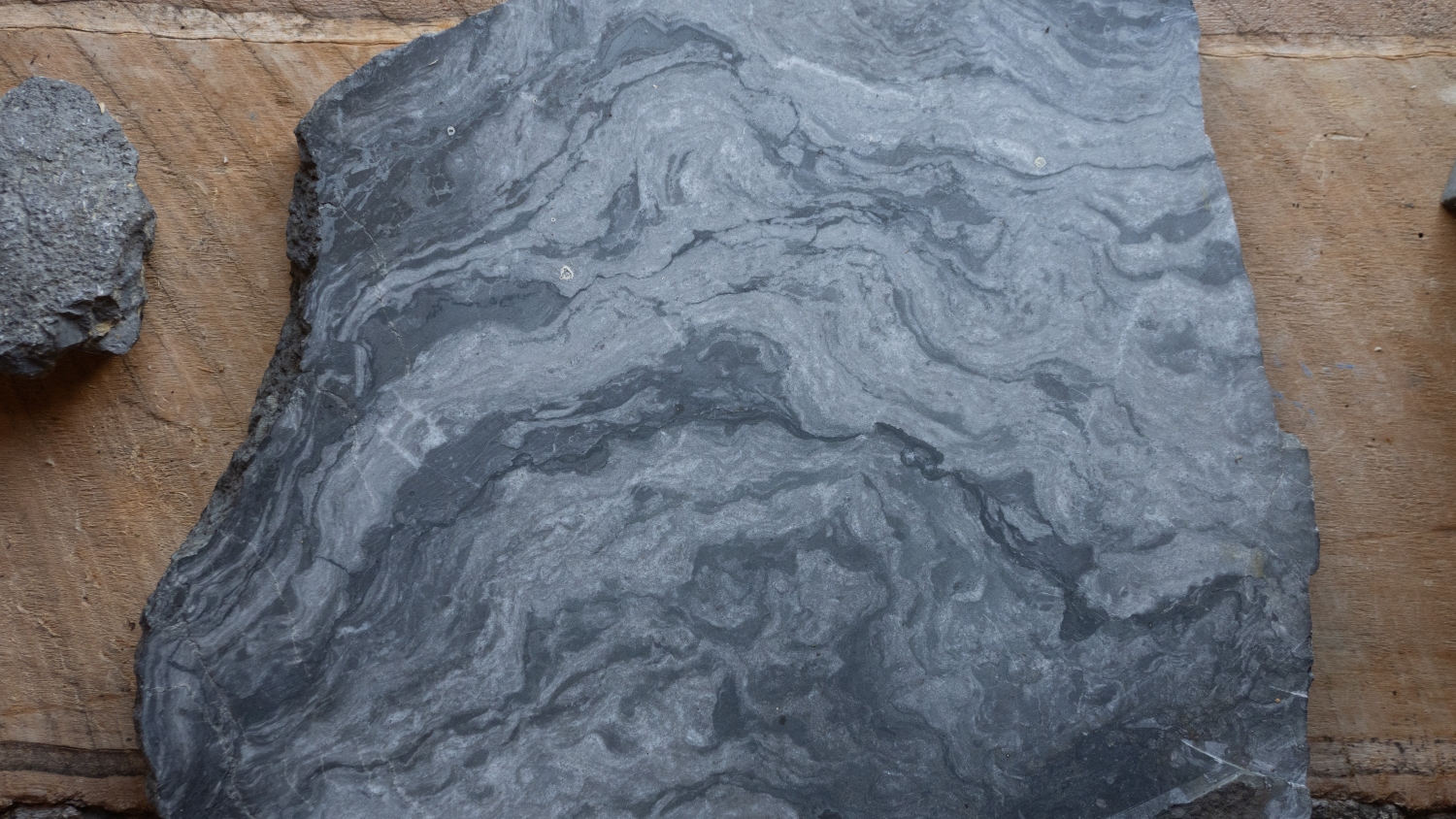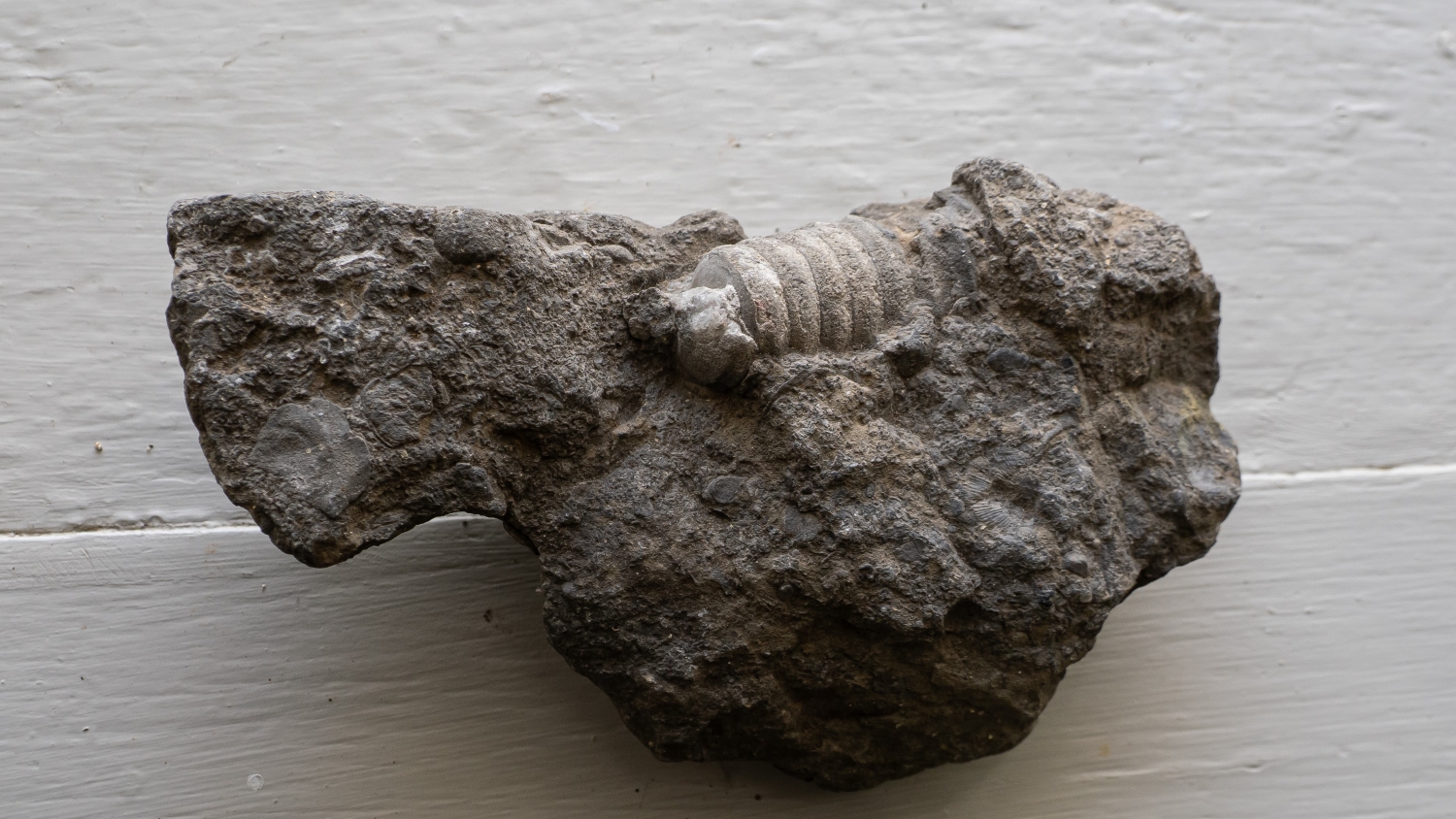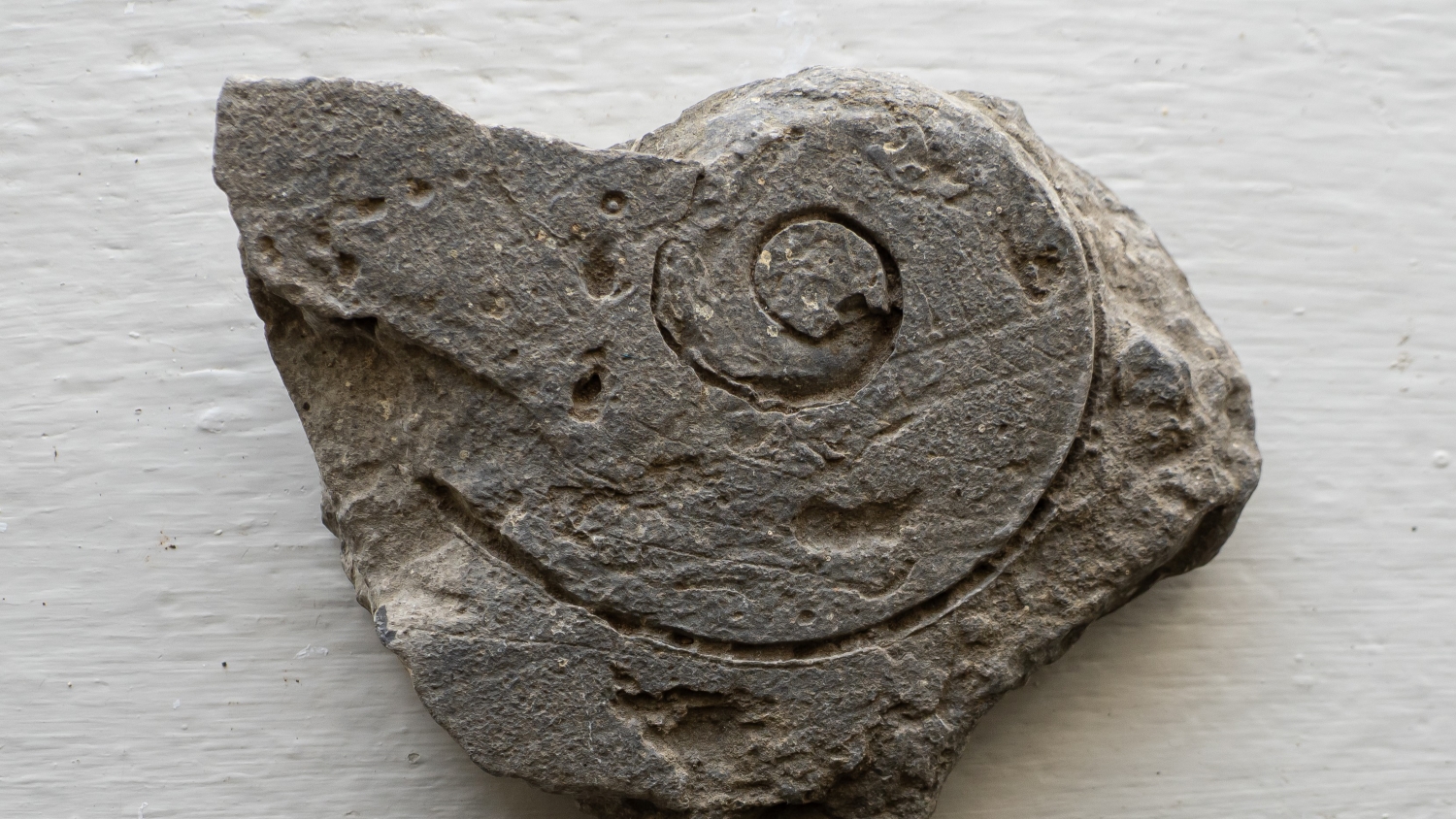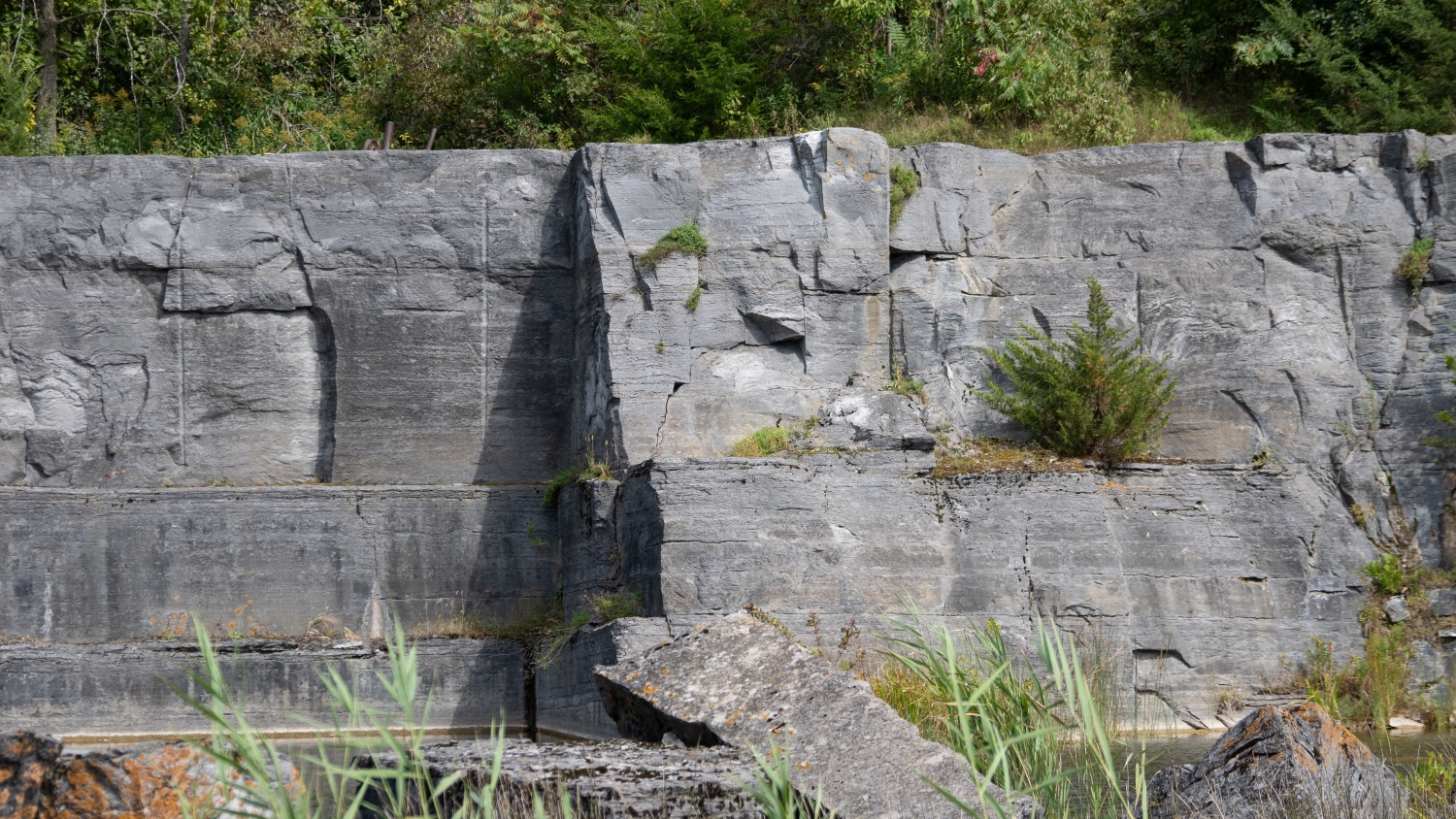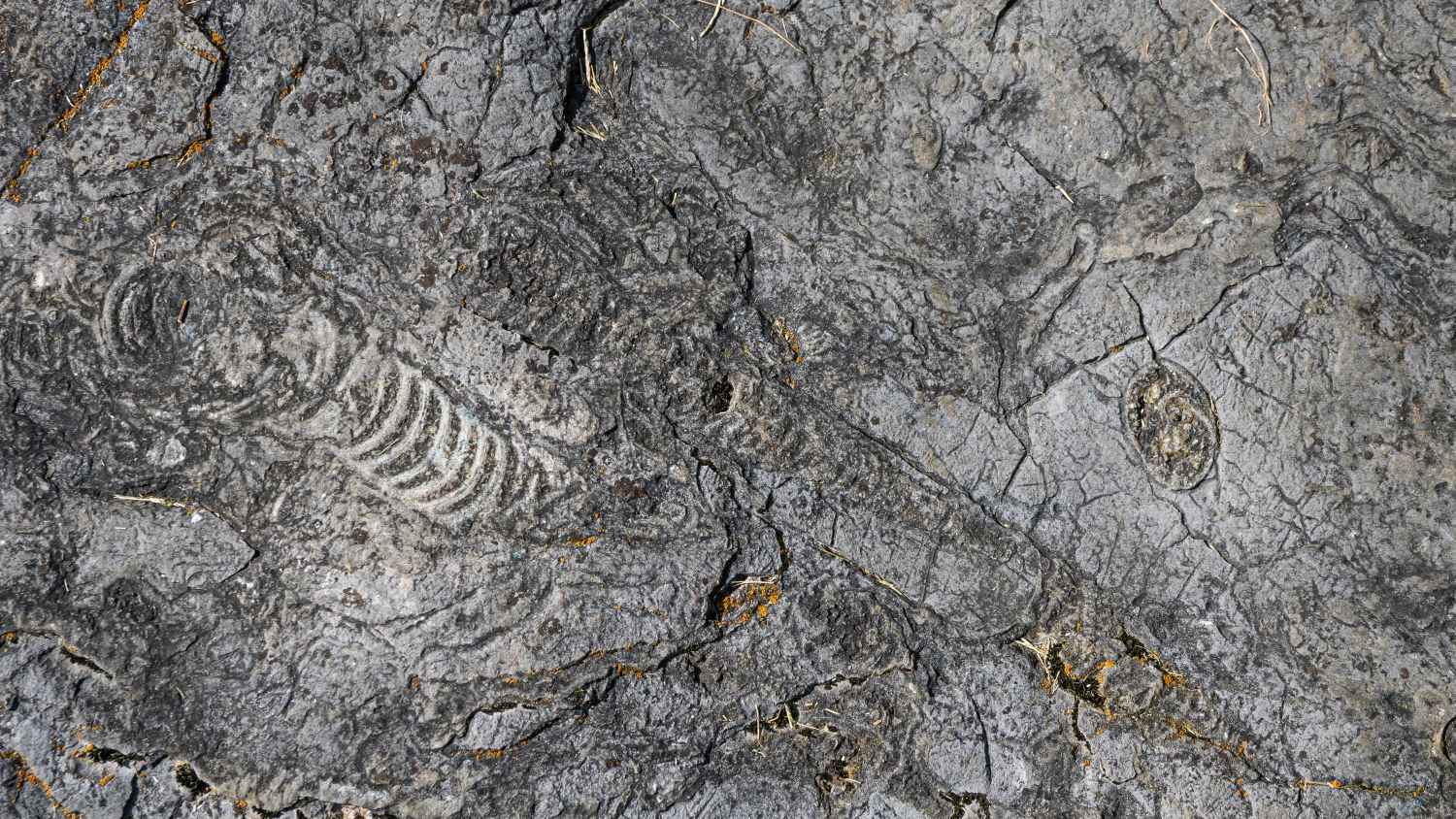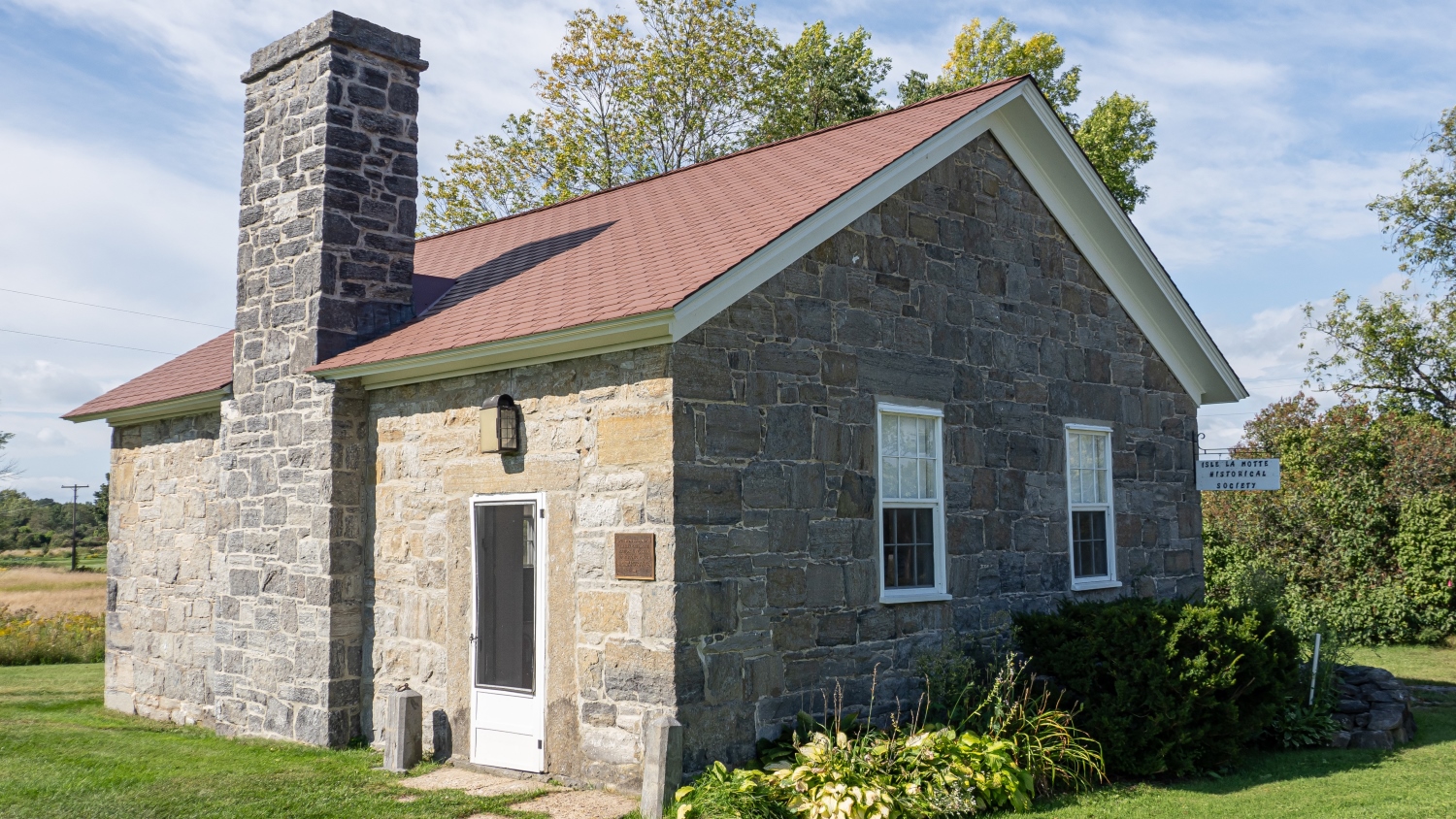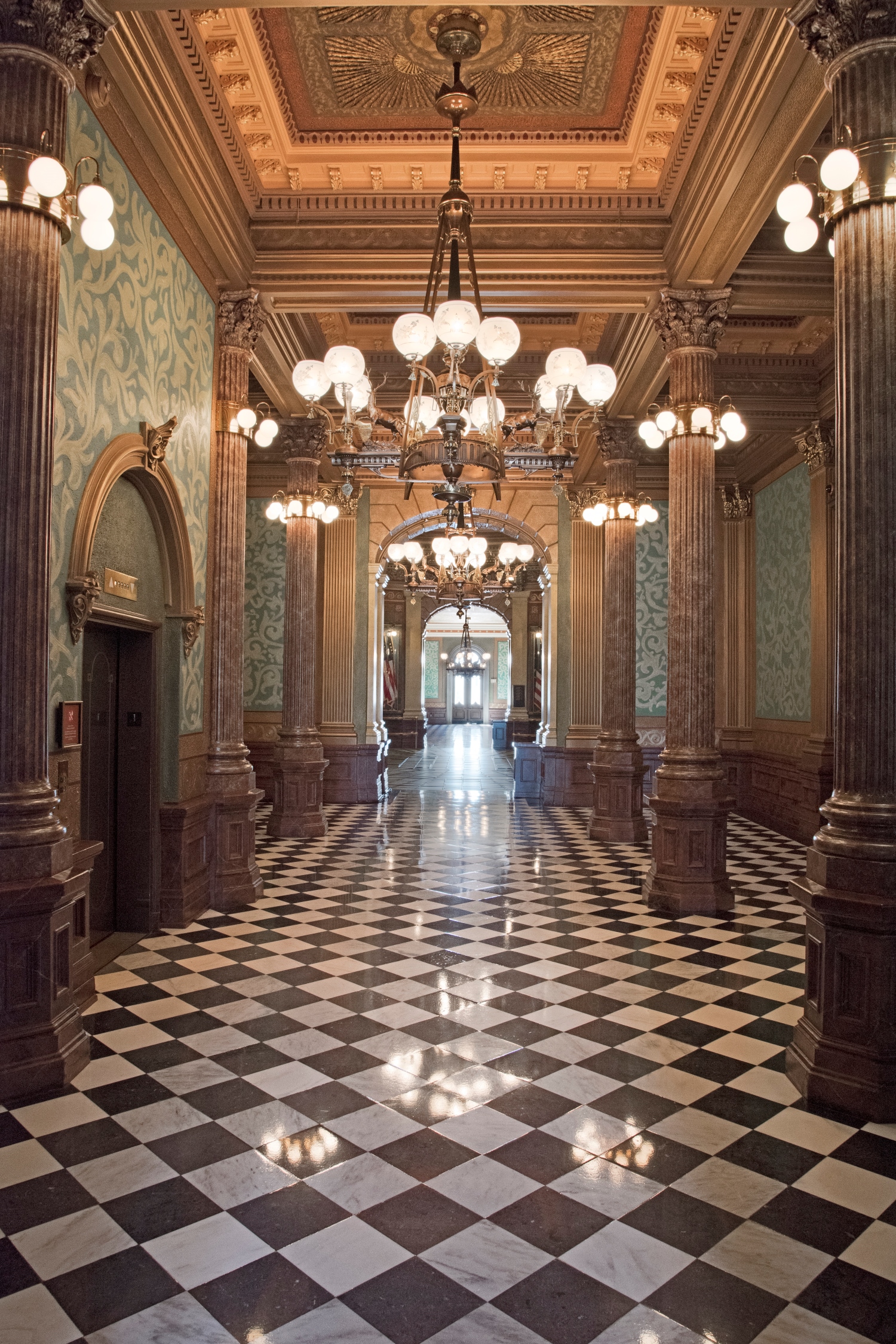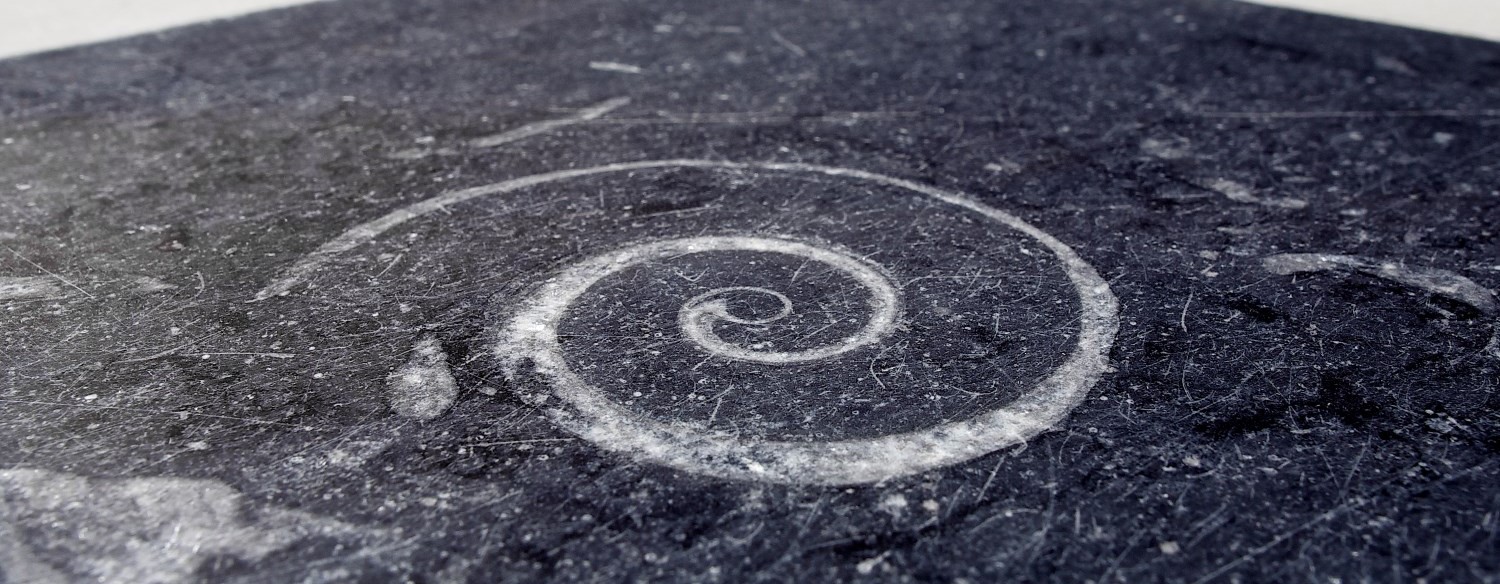In the fall of 2024, Director of Education & History Valerie Marvin traveled to Vermont to visit Isle La Motte. Located near the north end of Lake Champlain, it was once home to multiple active stone quarries that produced black limestone from the Chazy Fossil Reef. The limestone’s popularity surged in the late nineteenth century, leading contractors across the country to use it for flooring in buildings like Radio City Music Hall, and the Vermont and Michigan State Capitols.
This specific limestone was desirable for several reasons, but one of its most notable features is that it is full of fossils! Hardly any of the original black tiles in the building are a flat, black color. Nearly every square has some sort of eye-catching, 475-million-year-old lifeform in it. They date to a long-ago time when Vermont was located south of the equator, its land covered by water. As the water receded, the leftover sea creatures were slowly “baked” into hard rock.
Naturally, the most eye-catching fossils are the curved gastropods. Capitol Educators and staff commonly refer to them as snail shells, though technically snails are only one type of gastropods. There are also several other types of fossils, including Bryozoans (which look like short pieces of cooked spaghetti), Trilobites (which resemble crabs), Crinoids (which look like Lifesaver rolls), Sponges (which are circular), and Stromatoporoids (which look like sliced cabbage). That’s a lot to remember!
In the late nineteenth and early twentieth centuries, island residents used their limestone for many purposes. Isle La Motte is home to entire buildings built of the beautiful rock, and shards are piled up as dry-stack fencing!
But as more and more scientists learned about the unique black limestone, awareness grew that it was extremely special, and warranted safeguarding. Eventually two portions of the island were set aside for long-term preservation: the Fisk Quarry and Goodsell Preserves. Both are open for public visits during the summer season.

